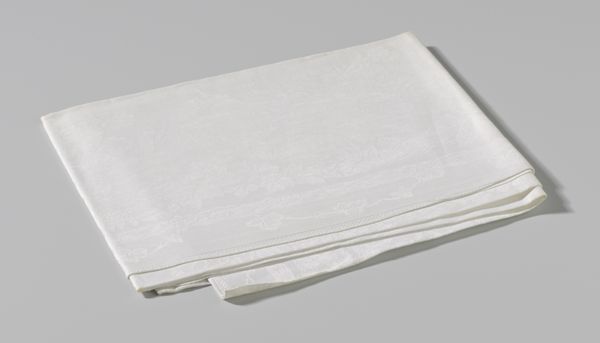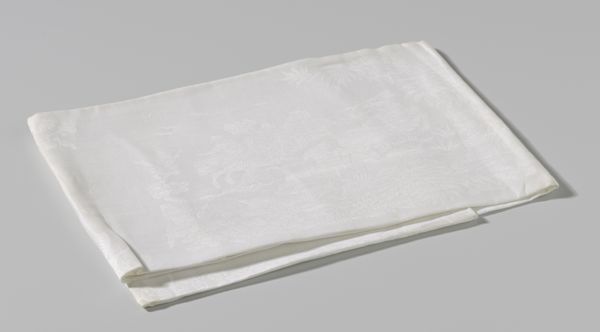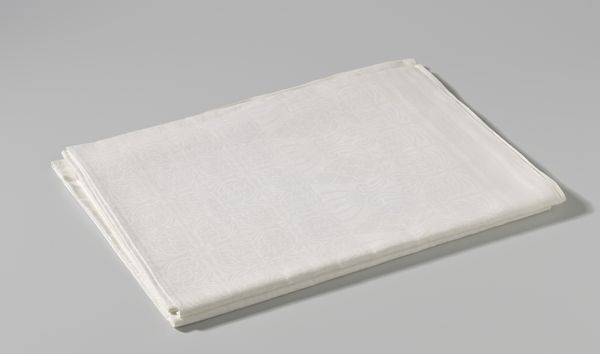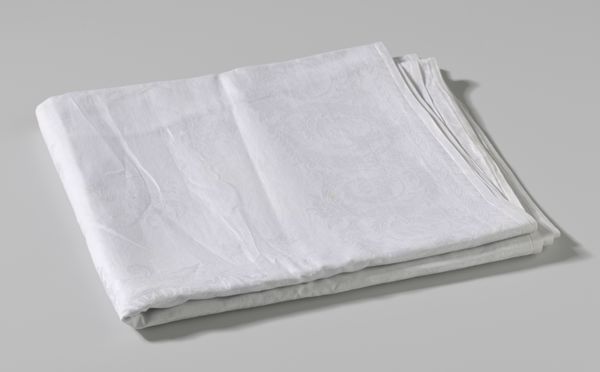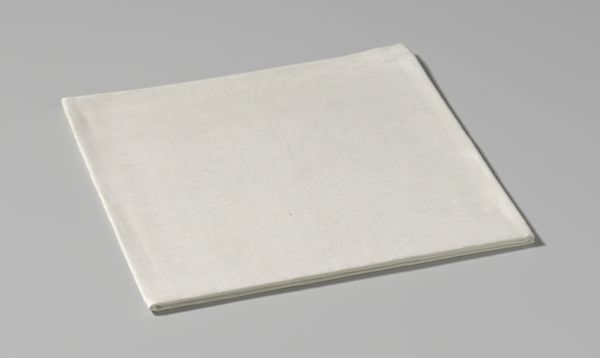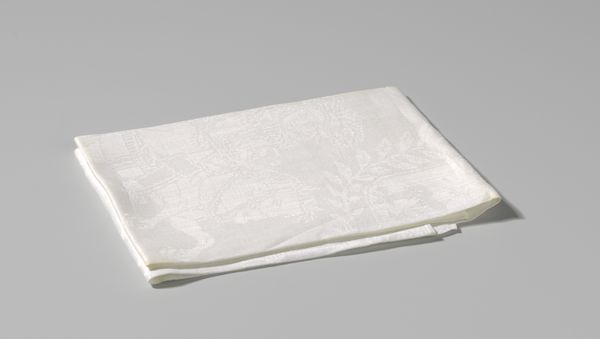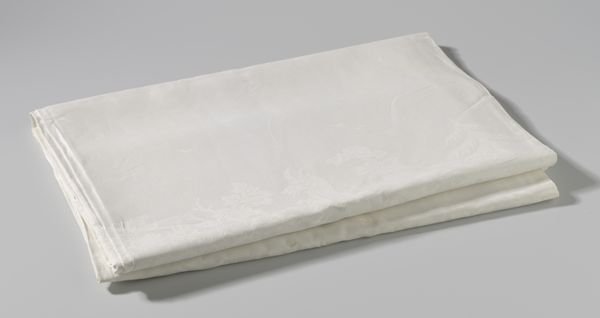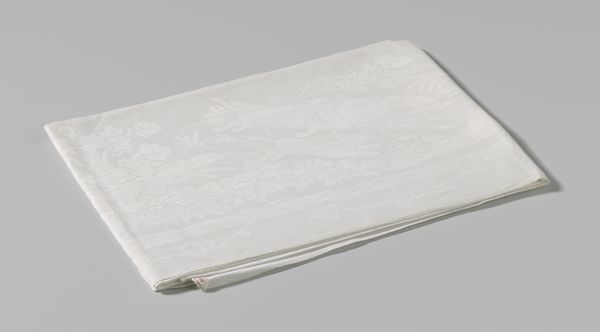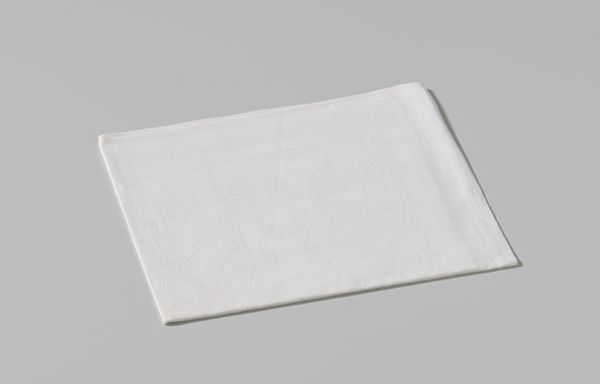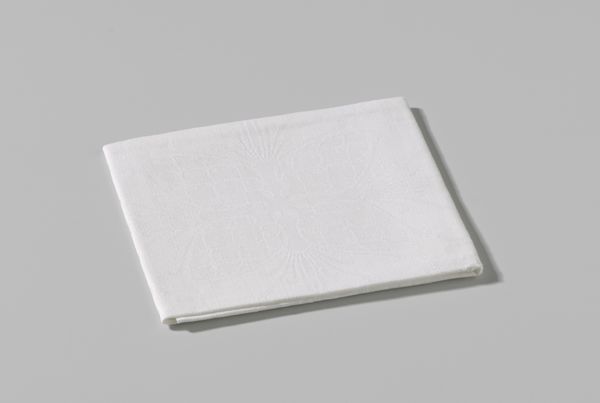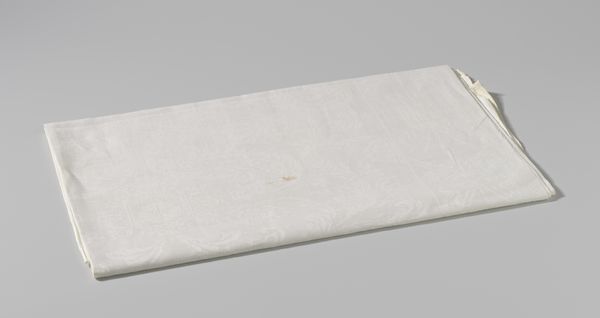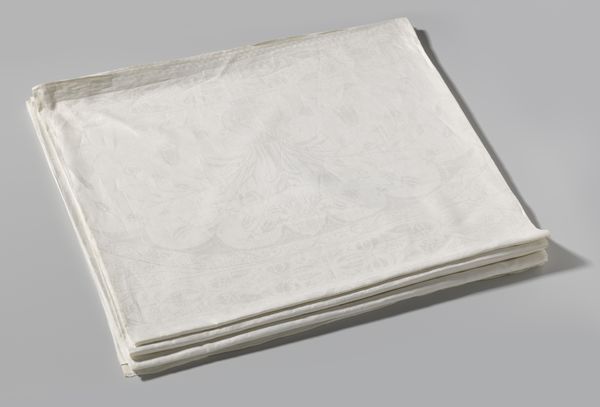
textile
#
product shot
#
book design
#
studio lighting mockup
#
hand drawn type
#
textile
#
personal journal design
#
printed format
#
book mockup
#
geometric
#
publication mockup
#
design mock up
#
publication design
Dimensions: length 40.0 cm, width 43.0 cm
Copyright: Rijks Museum: Open Domain
Curator: This is a linen damask finger cloth featuring a geometric ornament, created sometime between 1900 and 2000 by E. Siewerts van Reesema. It is an excellent example of practical artistry. Editor: At first glance, the starkness of the white fabric laid open before us like that creates a strange blankness, almost confrontational in its emptiness. What story does it tell? Curator: The geometric ornament is key. During this period, there was an increasing societal demand for accessible beauty, reflected in everyday items. It shows a desire to uplift the domestic sphere. The white linens and the precise geometrical pattern evokes minimalist aesthetics associated with affluence and high-end taste during those decades. The very materiality reflects industrial mass production with artisanal flair. Editor: It's interesting how something seemingly so utilitarian speaks to such larger social shifts, or tensions, really. I see in it the historical gendered roles projected onto "crafts" during this period, perhaps. It evokes notions of femininity. Did these cloths act as subtle declarations? Did the creation and use of these damasks carry inherent meaning about one's socio-economic standing? The material, after all, had to be acquired. It suggests education, access to goods, which meant capital, and leisure for upkeep. Curator: Absolutely. Consider also the colonial dimensions. Linen, historically grown and produced under conditions that were, shall we say, less than ethical in many parts of the world. Using it was an affirmation of certain trade dynamics, a certain global power structure, no? The object, a linen damask, appears neutral, even innocent, but when viewed with a broader context it speaks to intricate intersectional histories and politics. Editor: A powerful observation. We move beyond pure aesthetics and into a realm of tangible consequence when we consider the material origins of a common linen damask cloth. It really forces one to reconsider labor's value in creating art forms for mass appeal as the lines continue blurring in this period between fine art and industrial production. Curator: I concur. By viewing the historical, social contexts embedded within objects of utility we start to rethink what ‘art’ means. It can change perspectives. Editor: Indeed. Something so seemingly innocuous holds surprising truths.
Comments
No comments
Be the first to comment and join the conversation on the ultimate creative platform.
